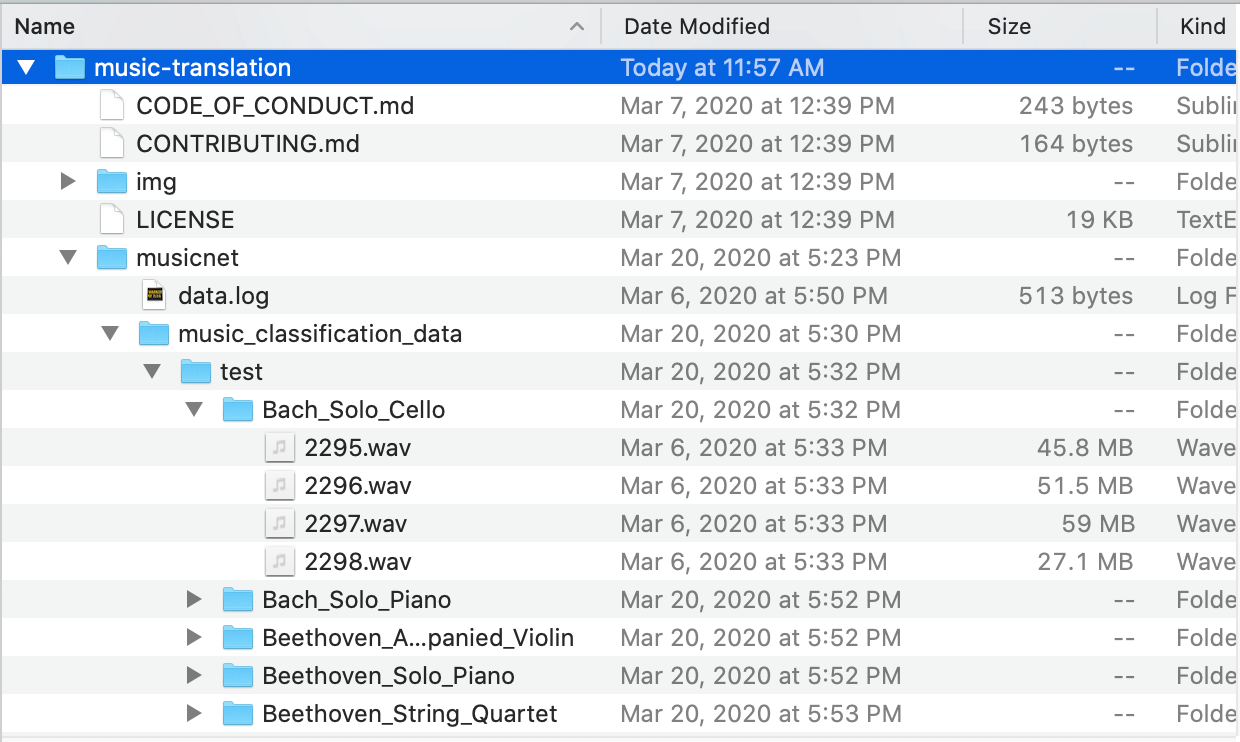Music Classifiers and how UMTN processes data
Alicia and James
We make our own music classifier with librosa and learn about formatting musical data into tensors we can work with.
Music Classifiers
Jupyter Notebook
To format the data for this classifier:
- Download the Musicnet library
- Put the folder titled “musicnet” in the music-translation folder
- Create a folder titled “music_classification_data” in the “musicnet” folder
- Create two folders in “music_classification_data” titled “test” and “train”
- In the “test” and “train” folders, put folders with the wav files in each such that the folders are titled with the labels for the wav files (e.g. “Beethoven_Accompanied_Violin”)

Access the Jupyter Notebook here
Helpful Resources for inspiration:
Pytorch Audio Classifier Tutorial
- Uses the UrbanSound8K dataset (contains 10 audio classes with over 8000 audio samples, classes such as air_conditioner, car_horn, children_playing, dog_bark, drilling, enginge_idling, gun_shot, jackhammer, siren, and street_music)
- Data is formatted using
torchaudio. - CNN, modeled after the M5 network architecture
Music Genre Classification with Python
- Basic guide on processing music with
librosa - Has basic Jupyter notebook on classifying music
- Uses the GTZAN music dataset (consists of 1000 audio tracks each 30 seconds long. It contains 10 genres namely, blues, classical, country, disco, hiphop, jazz, reggae, rock, metal and pop. Each genre consists of 100 sound clips)
Musical Genre Classification, Github Project by Dohppak
- Uses the GTZAN music dataset
- Processes music with
librosa - 4 layer CNN, validation accuracy is 77%, test accuracy of this model is 83.39%
Music genre classification with LSTMs in Keras & PyTorch, Github Project by Ruohoruotsi
- Uses the GTZAN music dataset
- Processes music with
librosa - Multiple layers of LSTM Recurrent Neural Nets
UMTN Data Notes
- Use librosa for reading in audio files
- Also uses h5py, which is a Python package that lets you store huge amounts of numerical data and manipulate it from Numpy
self.data = [DatasetSet(d, args.seq_len, args) for d in args.data]
This line of code is pulled from train.py and is basically how they pass in most data (args.data is passed in through the data parameters in the shell script train.sh)
DatasetSetis located indata.py. Its subclasses such asH5Datasethelp take the program take in .wav and .h5 files, process/sample them depending on specific parameters, and then return a dataset. More about manipulating/pulling data from datasets can be found here.
Written on March 20, 2020